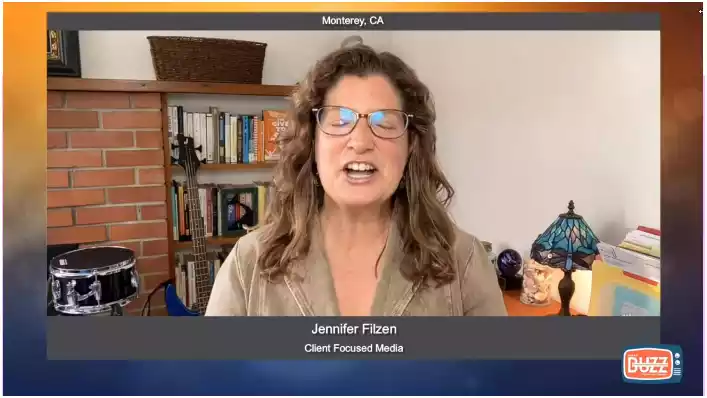How the Prior Authorization Process Works
Dive into the fascinating world of prior authorization and unlock the secrets to navigating healthcare effortlessly. Discover how the prior authorization process works and take control of your medical journey today!

In the realm of healthcare bureaucracy, navigating the process of prior authorization pharmacist can often feel like traversing a labyrinth. Understanding how to appeal a prior authorization denial is crucial for patients and providers alike. By mastering the intricacies of this process, you can advocate for the care you need while ensuring that healthcare resources are utilized effectively. Let’s delve into the steps involved in appealing a prior authorization denial and equip ourselves with the knowledge needed to navigate this complex terrain effectively.
Learn more!
Table of Contents
Knowing How the Prior Authorization Process Works
Both individuals and healthcare providers may need help with the prior authorization process. Prior authorization is when medical professionals must ask insurance companies for permission before administering a specific treatment or prescription. It can take some time to navigate, even though its goals are to reduce healthcare costs and guarantee patient safety. We want to clarify some aspects of the prior authorization procedure and offer advice and suggestions to make it easier to handle through our blog.
The Fundamentals of the Prior Authorization Process
Prior authorization is frequently used in the healthcare sector, so it’s important to understand the procedure when using healthcare services. Insurance companies want prior authorization for certain operations and treatments to guarantee that a test or treatment is medically required and economically viable. Before arranging treatments or services, patients and providers must know which medical services need prior authorization and secure the required approval.
Getting Prior Authorization
The prior authorization procedure can be tedious and time-consuming for patients and providers. Patients may receive necessary surgeries or treatments slowly due to the lengthy documentation requirements and occasionally long wait times for clearance or physician answers. Moreover, requests that insurance companies reject may have to go through a drawn-out appeals procedure or a second review, which prolongs the administrative process and occasionally jeopardizes the patient’s health. Below are some common difficulties patients and providers face during prior authorization.
- Lack of transparency
Greater process transparency is one of the main obstacles to prior authorization. Insurance companies frequently have intricate and dynamic approval criteria, which makes it difficult for providers to understand what documentation is required or whether a particular treatment will be covered. This lack of openness may cause misunderstandings and delays in patients receiving the required care.
- Administrative burden
A lot of administrative work, including completing forms, obtaining medical records, and corresponding with insurance companies, is involved in the prior authorization process. This puts more strain on medical professionals already overburdened with patient care duties. Additionally, since clinicians might have to put administrative responsibilities ahead of appointments, it could cause delays in patient care.
- Delays in treatment
Patients may delay receiving essential medical care or prescription drugs because of the drawn-out prior authorization process. Their health may suffer, particularly if they have ongoing medical issues that need to be treated immediately. Additionally, delays may cause symptoms to worsen and even result in more serious health issues.
- Increased healthcare costs
Prior authorization delays and administrative burdens can raise the cost of healthcare for both patients and providers. The time and resources providers require to complete the required paperwork may increase, ultimately raising the cost of healthcare services. In addition, patients may incur higher out-of-pocket costs if their insurance provider declines to cover a particular procedure or treatment. - Lack of standardization
Insurance companies’ prior authorization procedures differ, but they all offer patients and providers uniformity and clarity. The process is difficult to streamline due to this lack of standardization, which can lead to needless delays and care denials. For patients and providers, prior authorization can be difficult and frustrating.
To guarantee prompt and effective patient access to essential healthcare services, healthcare organizations and insurance companies must enhance the procedure. This may entail implementing uniform protocols, boosting openness, and lessening the administrative strain on service providers.
Patients should also be fully informed about their insurance coverage and any potential prior authorization requirements to prevent delays in receiving care. All parties involved can benefit from a less onerous and more efficient prior authorization process with sustained efforts to resolve these issues. Ultimately, the objective should be to preserve effective and economical healthcare procedures while prioritizing patients’ health and access to required treatments.
Difficulties with Prior Authorization
The prior authorization procedure can be tedious and time-consuming for patients and providers. Patients may receive necessary surgeries or treatments slowly due to the lengthy documentation requirements and occasionally long wait times for clearance or physician answers.
Moreover, requests that insurance companies reject may have to go through a drawn-out appeals procedure or a second review, which prolongs the administrative process and occasionally jeopardizes the patient’s health.
On the other hand, providers may need help with prior authorization as it takes away valuable time that could be spent treating patients and managing other administrative tasks. The prior authorization process can also be confusing and complex, with different insurance companies having varying criteria and procedures.
I'm very thankful for Portiva who I know is looking after my practice while I'm gone the virtual assistants can manage prescription refills, documents they can triage patients and just kind of answer administrative questions and they can handle a lot on their own. But also, they're very good about contacting me if there's any emergency or anything I need to attend to. So I'm very thankful for Portiva they can help almost any provider almost anywhere and it really allows for some good work-life balance as I'm getting to experience right now at my family farm so I'm very thankful for Portiva and I'm very happy to use their services"

Board Certified Family Medicine Physician

Portiva's Virtual Medical Assistant - I have all the support I need. There's somebody checking my email, any patient messages. Patients are still able to schedule and handle any scheduling issues and any kind of billing that needs to still go through. Portiva hands handles it all for me. I have support i have somebody that I can access 24/7 pretty much. It's all very seamless. If somebody has an emergency or needs a medication called in. I know that the va's at portiva will handle that for me.

Board Certified Family Medicine Physician

Managing the Prior Authorization Process: Some Advice
Providers have several options for more effectively managing the prior authorization process for their patients, including:
- Understand the procedure: Patients and healthcare professionals must know and abide by the health plan’s prior authorization process flow.
- Act proactively: Both patients and providers must foresee the requirement for prior authorization for particular treatments and initiate the procedure well before the demand for the medical service.
- Correct documentation: To expedite the review process, providers must make sure that all patient medical records contain the required data, including the patient’s medical history, current prescriptions, and medical problems.
- Employ electronic tools: Providers should use electronic prior authorization technologies to expedite the procedure and minimize paperwork.
- Keep up: Healthcare providers need to be aware of any modifications to paperwork or requirements from health plans and any changes to the prior authorization procedure.
- Effective communication is key: Healthcare professionals should keep patients informed about the progress of their prior authorization requests and give them updates on time.
- Keep track: To keep track of all previous authorization requests, including the submission date and status updates, providers must have an orderly structure in place.
Some further advice on handling the prior authorization procedure:
- Employ a committed team or employee: Designating a particular team or someone to supervise the prior permission process will help guarantee that all requests are processed effectively.
- Examine and streamline internal procedures: To create a more effective prior authorization process, providers should routinely assess their internal procedures to find areas that may be enhanced or streamlined.
- Use electronic health records (EHRs): By making patient medical information easily accessible and automating repetitive activities like pharmacological interaction checks, EHRs can expedite the prior authorization process.
- Patients should be aware of the value of prior authorization: How it can enable them to get essential medical care from their providers.
- Speak up for your patient: As a medical professional, it is critical to speak up for your patient’s needs and collaborate closely with insurance companies to guarantee that they are promptly approved for treatments that are deemed required.
- Monitor denials and appeals: Providers should maintain a record of previous authorization denials and appeals to see trends or reoccurring problems and take proactive measures to address them.
- Use the resources offered by health plans: Some might supply instruments or resources to assist clinicians in handling the prior authorization procedure. Using these tools to expedite the process is advantageous for providers.
Healthcare practitioners can more effectively oversee the prior authorization procedure and ensure patients receive critical medical care on time by adhering to these recommendations. To maintain efficiency, it’s critical for providers to regularly assess and enhance their internal procedures and to remain informed of any modifications or advancements to the process. Health plans and providers can streamline the prior authorization process for both parties’ benefit and that of their patients by cooperating.
Conclusion:
It’s crucial to completely comprehend the prior authorization process because it can be difficult for patients and healthcare professionals. Patients and providers should collaborate to comprehend and adhere to the proper prior authorization process flow, give sufficient time for review and response, and make sure all required documentation is in place to enhance the experience. To expedite the process, healthcare practitioners can also use the electronic prior authorization tools and services provided by payers. In conclusion, better patient outcomes and a more seamless healthcare experience depend on understanding and skill with the prior authorization procedure.
Although the prior authorization procedure might initially seem complicated, it can be handled skillfully with the right information and cooperation between patients and healthcare professionals. Patients must keep their providers informed about any updates or changes that may take place, as well as express their needs and concerns. However, healthcare professionals should try to inform their clients about the prior authorization procedure, its significance, and its potential benefits for them in the long run. This cooperative endeavor may mitigate some of the anxiety linked to earlier authorizations.
To learn more about pharmacy benefit manager (pbm) that can enhance your medical practice. Discover more about Portiva and unlock a world of possibilities by visiting our homepage today!
- Dynamics of prior authorization rules
- Significance of prior authorization
- The essential role of prior authorization
- Advantages of healthcare prior authorization
- How to handle authorization denials
- Streamline prior authorization process
- Managing prior authorization
- Benefits of prior authorization software
- Operating authorization denials
- Simplify patient care with prior authorization
- Monitoring the prior authorization
- Healthcare prior authorization regulations
- Handling prior authorization rejections
- Prior authorization criteria
- Prior authorization limitations
- Strategic planning for prior authorization
- Navigating prior authorization process
- Effects of prior authorization on healthcare
- Understanding the prior authorization




